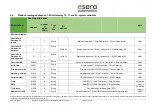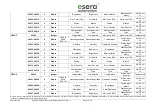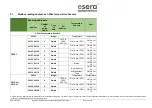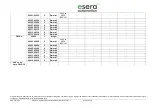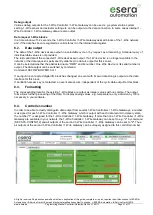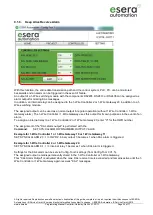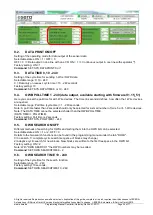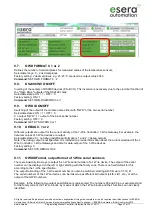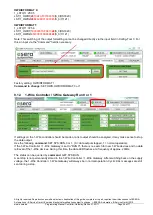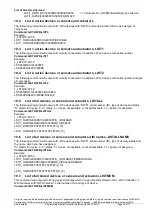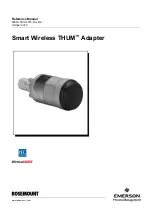
All rights reserved. Reproduction as well as electronic duplication of this guide, complete or in part, requires the written consent of ESERA-
Automation or E-Service GmbH. Errors and technical modification subject to change.
©
ESERA-Automation, E-Service GmbH 2019
www.esera.de
Programming Manual Controller-Gateway-Station V1.0 R1.1
Page 29 of 77
7.
Command structure ASCII protocol
There are basically four types of command- and output identifiers. They can be used to differentiate and evaluate
the various data of the outputs and inputs.
SET:
Set values or modes of the 1-Wire Controller
GET:
Querying data or modes
INF:
Data output after a GET command
ERR:
Error Output after a wrong input
EVT:
Messages sent automatically by the 1-Wire Controller / 1-Wire Gateway
DBG:
test issues
8.
Configuration and data output ASCII protocol
8.1.
Command principles
All commands can be written in upper or lower case.
The command parts sent to the 1-Wire Controller / 1-Wire Gateway are separated by a comma (,).
Data output 1-Wire Controller / 1-Wire Gateway, ASCII text output
- Each data output triggered cyclically by the 1-Wire Controller / 1-Wire Gateway is initiated by controller
no._EVT|TIME
- Data output by events (digital inputs, e.g. DS2408) are initiated by controller no. _EVT|.
- Data records per 1-Wire device are separated by a semicolon (;)
- The variable name and variable value are separated by a vertical dash (|).
-
Each command to the 1-Wire Controller / 1-Wire Gateway must be terminated with a carriage return
(CR, hexadecimal 0D).
-
Each data output of the 1-Wire Controller / 1-Wire Gateway is terminated with a carriage return (CR,
hexadecimal 0D or decimal 13) and line feed (LF, hexadecimal 0A or decimal 10).
- The 1-Wire Controller / 1-Wire Gateway has a data memory for up to 10 commands. The received commands
are processed "First In - First Out".
Config-Tool 3: data output
Config-Tool
data output

